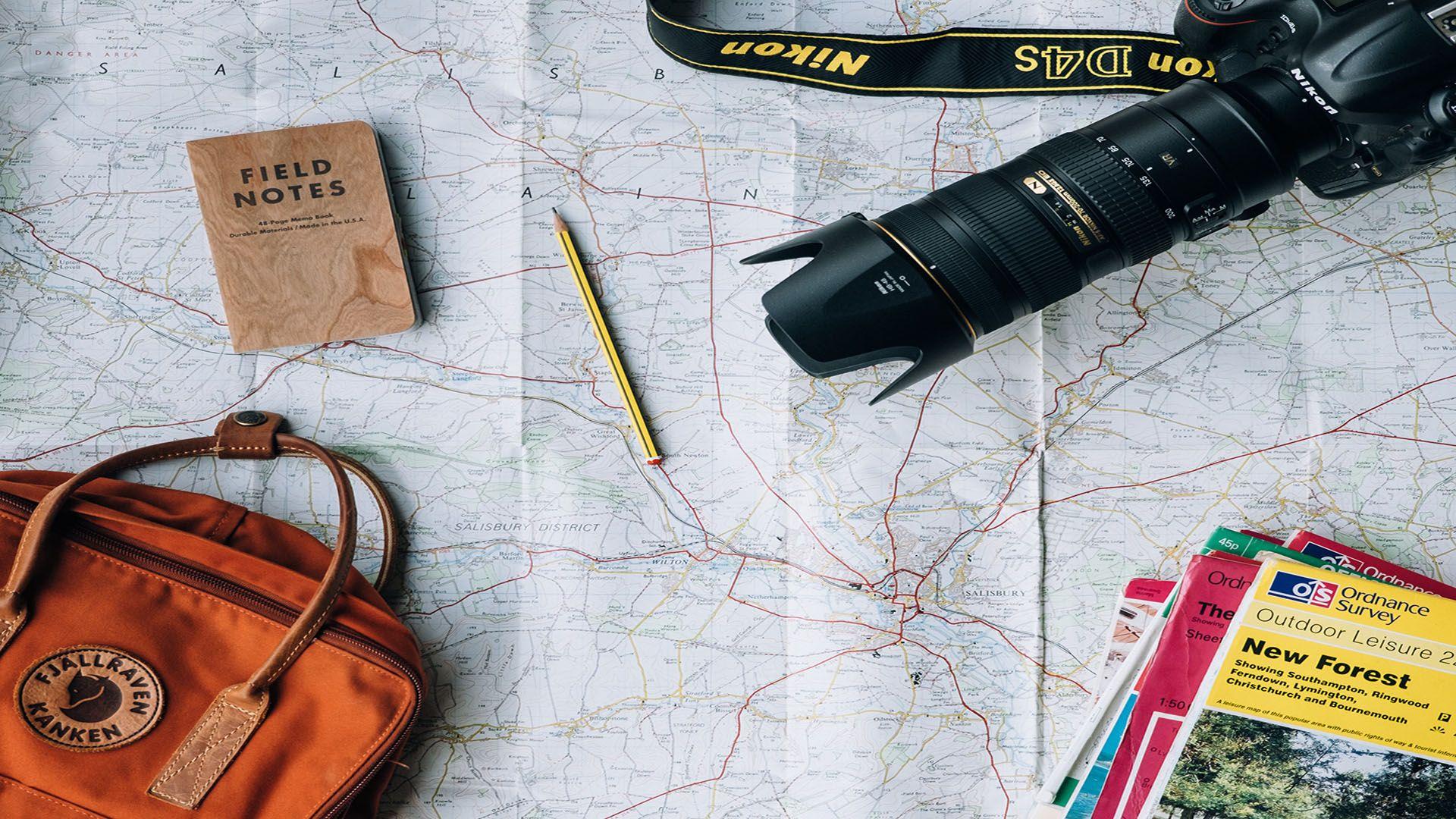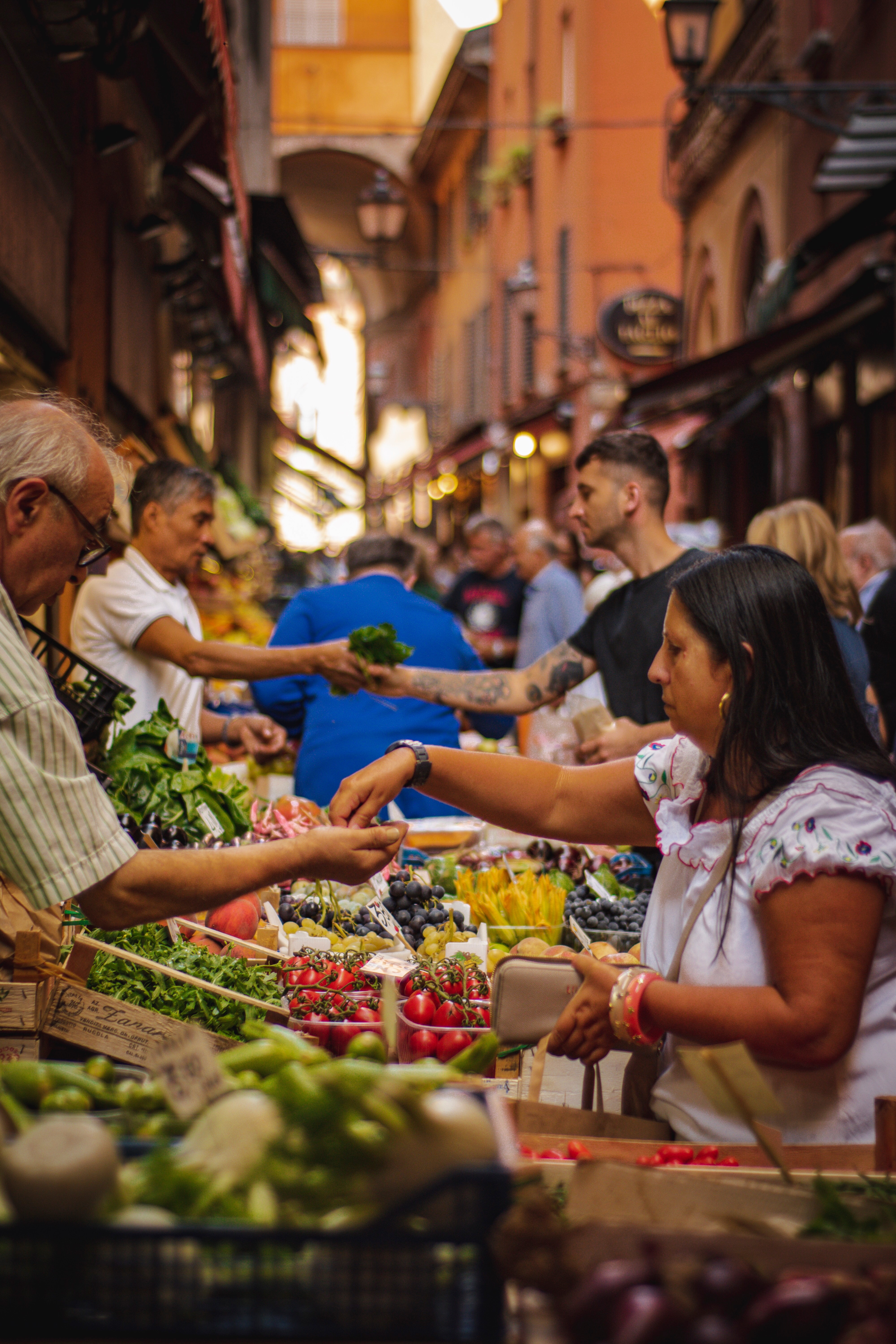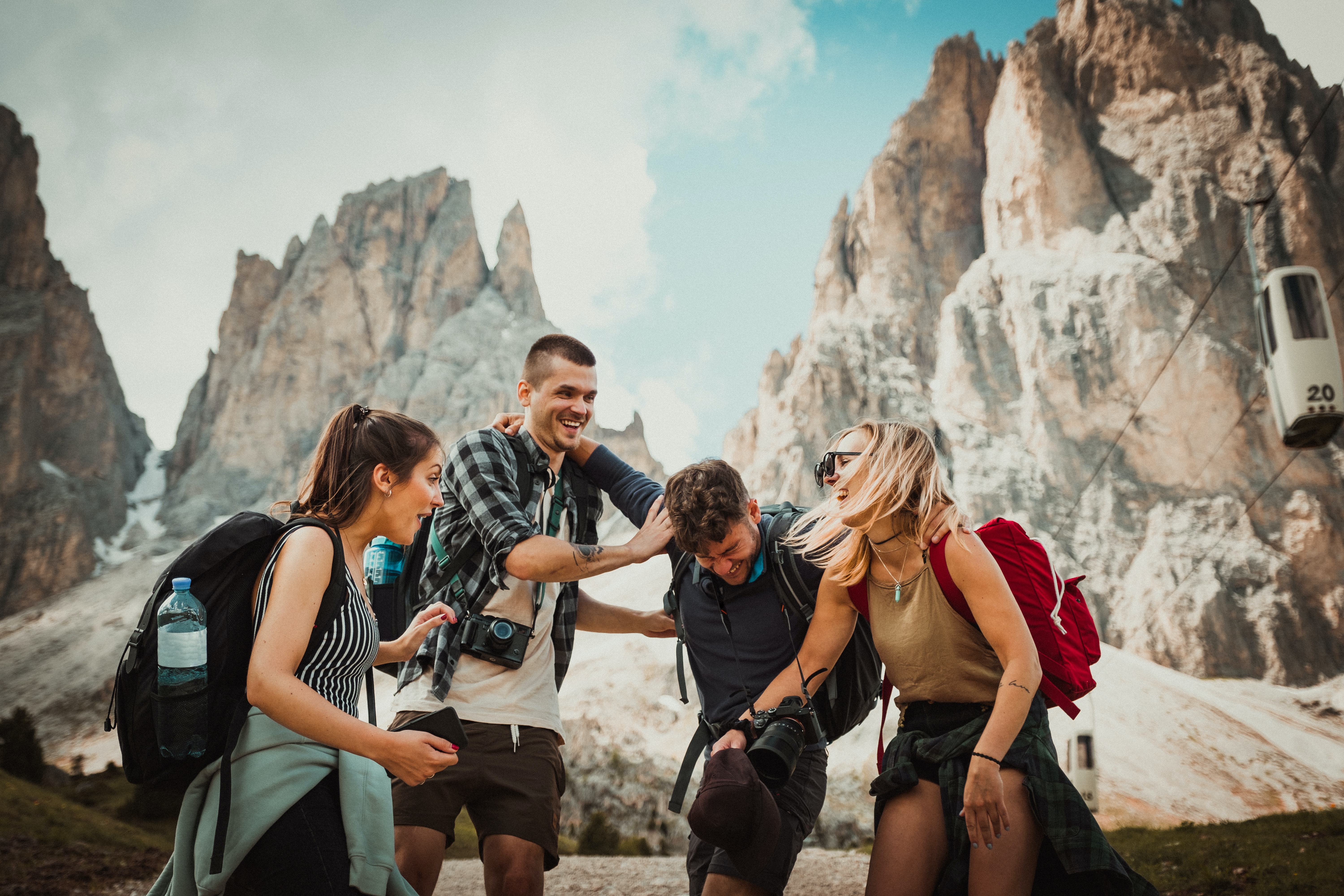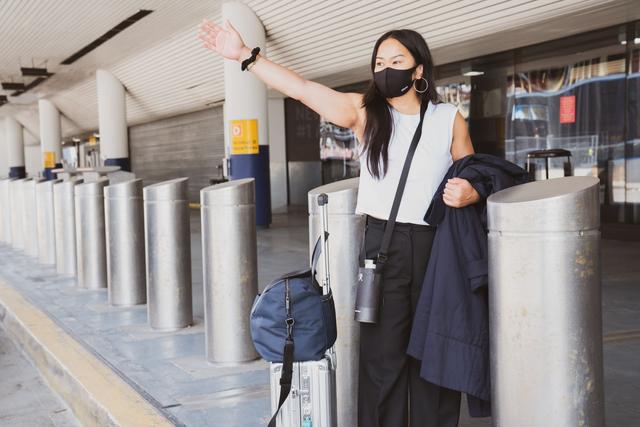My Bookings
Please Enter Your Booking Code To Find Your Booked Tour!

Traveling Sustainably
Table of Contents
World Tourism Organization (UNWTO) has designated September 27th as World Tourism Day as a day to focus on “Tourism for Inclusive Growth”.
UNTWO is a specialized agency for responsible and sustainable tourism working towards inclusive recovery and growth, ensuring that “every part of the sector has a say in its future - including communities, minorities, youth and those who would otherwise be at risk of being left behind” (UNWTO).
In celebration of World Tourism Day, we are counting down 10 tips for sustainable and inclusive travel!
What is Sustainable Travel?
Sustainable travel, also known as green tourism, is when tourists take conscious efforts to lessen their footprint not only at home but when traveling to different destinations, keeping our planet at the front of their minds.
This form of tourism takes into account both current and future economic, social, and environmental impacts to create a positive influence when traveling.
Why Travel Sustainably?
Tourism is one of the world’s fastest-growing and most important industries acting as a major source of income for many countries. However, along with other forms of development it can also cause social issues, loss of cultural heritage, economic dependence, and ecological degradation.
That is why it is so important to seek more responsible tourism as it focuses on taking care of the environment, society, and economy seeking to minimize the negative and maximize the positive impacts of tourism.
Tip #1:Staying Close to Home
As a general rule to reduce your carbon footprint, the shorter the distance from home the better for the environment so when going farther, there are some destinations that are more sustainable than others.
Adventure in your own backyard and think like a tourist! View your very own city, taking in unexplored areas, if looking for traveling amongst the greenest forms of travel. Even a small adventure can feel like a world away.
Tip #2: Contribute to carbon offset schemes

When choosing to go a further distance you can try your best to contribute to carbon-offset schemes by taking the train or bus instead of an airplane, when possible plus you can gaze out the window at the community on the route, taking in the environment.
There are obviously destinations where an airplane is necessary to take, in this case, you can also opt for eco flights! Eco-flights have a lower impact on our environment and are deemed ‘eco’ or ‘green’ through their use of biofuel, the maximization of space, and the elimination of single-use plastic.
The availability of eco flights has been increasing and is often more cost-friendly. Low-cost airlines are often more eco-friendly than larger airlines due to their capacity as they can get on more passengers in the cabin, an airline that is able to do this is Flair which regularly features green choice options.
There are also airlines such as Air Canada that are committed to paperless and or the elimination of single-use plastics on their flights. Not only can booking an eco flight help with your commitment to more environmentally friendly travel you can also; fly economy and take up less space, book direct flights, travel with reusable, non-plastic water bottles, travel to an eco-friendly destination, and pack light.
According to a dozen sustainability organizations that compiled a list of the greenest places to visit Slovenia, as well as locations in Spain were amongst the best places to visit and leave a light footprint (2019).
There are even places such as Palau that require visitors to pledge to protect the natural and cultural heritage before entering.
Tip #3: Travel Slow

With today’s culture, we often are moving at a much faster pace, seemingly in a race to check off all the attractions on our to-do and bucket lists leading to a tendency to spend little time actually enjoying the attractions when arriving at a destination.
Slowing down and taking more time at our destination can have a positive impact on not only your well-being and avoiding travel burn-out and your budget, but it also is easier on the environment.
Slow travel encourages travelers to incorporate more of the local economy on their trip, taking alternative methods of transportation, and having deeper-first-hand interactions. Taking more time to reach attractions can result in making use of local transit such as renting a bicycle, taking the bus or train, or even walking!
All of these modes of transportation are great at not only offsetting carbon emissions but also allowing you to establish a deeper connection with the locals and the environment you are visiting.
When choosing to travel slowly one may also keep to one destination instead of squeezing in as many attractions in a short amount of time, instead create a small list of one or two destinations you really wish to see and go with the flow!
Keeping your destination list small encourages you to stop and smell the roses, fully appreciate where you are, and embrace the local culture while also supporting locals. Instead of jumping back in a car, train, or bus, walk over to the closest coffee shop or restaurant, and be open to doing something different based on your mood - don’t overthink it!
Tip #4: Carry your own sustainable travel kit

Single-use plastic and styrofoam are very damaging to the environment, and a great way to eliminate this issue is to carry your very own sustainable travel kit. The kit should include a reusable water bottle, reusable cutlery, straw sets, and a quick-dry towel!
Another item you should consider adding to your sustainable travel kit or keeping on your person at all times is a fabric tote bag which will greatly reduce the need for plastic shopping bags at shops while also allowing you to carry a lot of stuff as it is stronger than plastic, and of course, will help you look more stylish as well as more like a local when walking down the city streets.
Bottled water is one of the largest contributors to waste when traveling so investing in a quality reusable water bottle to bring along in your sustainable travel kit is one of the best things you can do to reduce plastic consumption and waste while also saving money in the long run.
When traveling to warmer destinations your kit should also include reef-friendly sunscreen also known as ‘mineral sunscreen’.
This sun cream does not contain any chemicals that may ruin your skin or the ocean.
Tip #5: Respect the Locals

When tourists visit different countries there are social and cultural impacts for both the traveler and the host community. It is important that when traveling to new destinations you keep in mind the culture of the locals you are visiting, remember you are a guest, and come bearing respect for your host country and its people.
It is important to always respect the local religions, customs, and ways of living. Before traveling you should try and learn the basics about the culture to lessen the likelihood of offending the locals. A good example of this is to dress respectfully in order to respect their customs.
We also suggest you learn some phrases in the local language, this will show an effort to try to communicate with locals and make them more willing to help, in addition, a smile and some sign language will also help.
It is also a good idea to always ask permission when taking images that include the locals, this also opens up the opportunity for you to learn more about the individual and their culture.
Tip #6: Keep the Money Local

Economic sustainability in tourism means that we must use, safeguard and sustain resources to create long-term sustainable values through optimal use, recovery, and recycling. A great way to do so would be to keep the money local by supporting local companies and street vendors.
This is not to say that you should avoid all foreign-owned businesses but rather try to determine whether these establishments hire local people and if they are invested in the local community.
It can be important to note that some of the foreign-owned businesses (especially the smaller ones) are often the result of a foreigner falling in love with the place and hoping to stay and contribute.
When looking to buy souvenirs or gifts for loved ones back at home consider purchasing them directly from a craftsperson, placing money directly to the artisan rather than the middlemen this also provides you with a unique, one-of-a-kind gift.
Also, try not to spend all your money on one place, consider visiting a variety of restaurants, shops, and cafes to spread the economic benefit around the community which also has an additional bonus of variety, the opportunity to try different foods and engage with different people.
Tip #7: Participate in Eco-friendly activities

A great example of sustainable tourism is Ottawa Boat Cruise with their soon-to-be EKEAU-certified, eco-friendly electric boat for Rideau Canal! One of its kind, it is North America’s largest 100% electric passenger vessel, offering a unique cruise experience for eco-tourists.
See Sight Tours is happy to include Ottawa boat cruises with our Best of Ottawa tour.
Walking tours are also a great opportunity to engage in eco-friendly activities, See Sight Tours is happy to provide walking tours with our fun, friendly, and local guides in Niagara Falls, Canada, Niagara Falls, USA, Toronto, and, Charlottetown PEI
Tip #8: Respect the Animals

It can be difficult to tell whether or not animals are treated properly so it is always important to do a bit of research about the organization you wish to visit to ensure it is an ethical place and read the reviews and articles.
A great way to view animals is to visit sanctuaries that provide valuable opportunities to learn about species that are difficult to see in the wild as well as viewing them in their natural habitats such as taking a whale-watching tour or safari!
When interacting with or near wildlife keep in mind to respect their boundaries, unwanted attention via interaction or petting can cause stress and anxiety in animals which has the ability to result in altered behavior.
Another great reminder is to not feed the wildlife as it does more harm than good.
Tip #9: Leave no Trace on Local Landscape

Often the waste disposal systems in the countries traveled to are not equipped to handle the demand of tourism so introducing a few simple changes to your travel routine can make a big difference. One way to do so is by using your sustainable travel kit to reduce your own consumption of disposable products while traveling.
When you are using disposable products ensure you are properly disposing of them, being mindful of recycling, composting, and garbage protocols and of course never leaving garbage on the ground.
Bottom line is that you should be mindful of your impact and follow the principle of “leaving nothing but your footprints behind” as much as possible.
Tip #10: Promote Sustainable Tourism

You may not even have to travel to encourage and assist in sustainable tourism! You can spread awareness of regulations and laws that support sustainable tourism such as the UNWTO’s One Planet Sustainable Tourism Program.
The program seeks to mainstream sustainable consumption and production in tourism. You can promote green tourism with your inner circle by making suggestions and sharing your personal experiences with whomever you are talking to, providing small yet impactful insights about what you care about.
There are also opportunities for you to donate to sustainable tourism businesses and organizations such as The Jane Goodall Institute - dedicated to global education of environmental conservation, TenTree which donates 10 trees for every 1 purchase, and Patagonia a sustainable clothing and outdoor brand.
Some Tools:
Eco-friendly booking sites such as bookdifferent.com calculates your footprint per night based on your selection and include eco-friendly ratings!
Companies such as lokal are sustainable travel agents who can take out some of the work for you and plan your very own trips and activities that take the environment and social impact into consideration.
It is important to keep the environment and humanitarian issues at the forefront when planning trips.
From shopping at local markets to packing a sustainable kit or donating to conservation and protection programs there are many steps one can take when trying to travel sustainably.
Related Blogs


How to Make Money While Traveling
Unlock the secrets of financing your Canadian adventures amidst its natural splendor. Explore opportunities like travel blogging, affiliate marketing, and remote work to fund your travels in Canada.
.webp%3Falt%3Dmedia%26token%3D34ede1cf-56c3-4ba0-bc9a-d5608053c9c0&w=128&q=75)
Aleena Mehmood

Canadian Travel Themed Backgrounds for Your Next Zoom Call
These stunning landscapes are the perfect backdrop to make you feel like you’re exploring Canada’s natural beauty instead of being stuck on a Zoom call at work.
Stephanie Webb
Quick Links
Book your Tour
Get in Touch
Toll Free
1-888-961-6584
Local
1-289-271-9767
© 2025 See Sight Tours. All Rights Reserved.
1-888-961-6584


